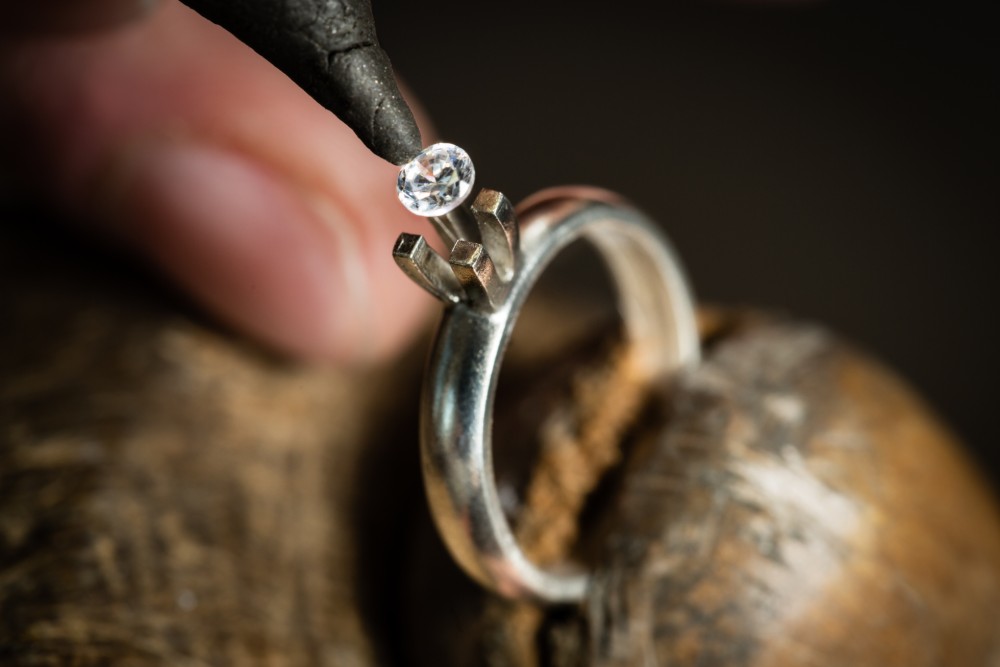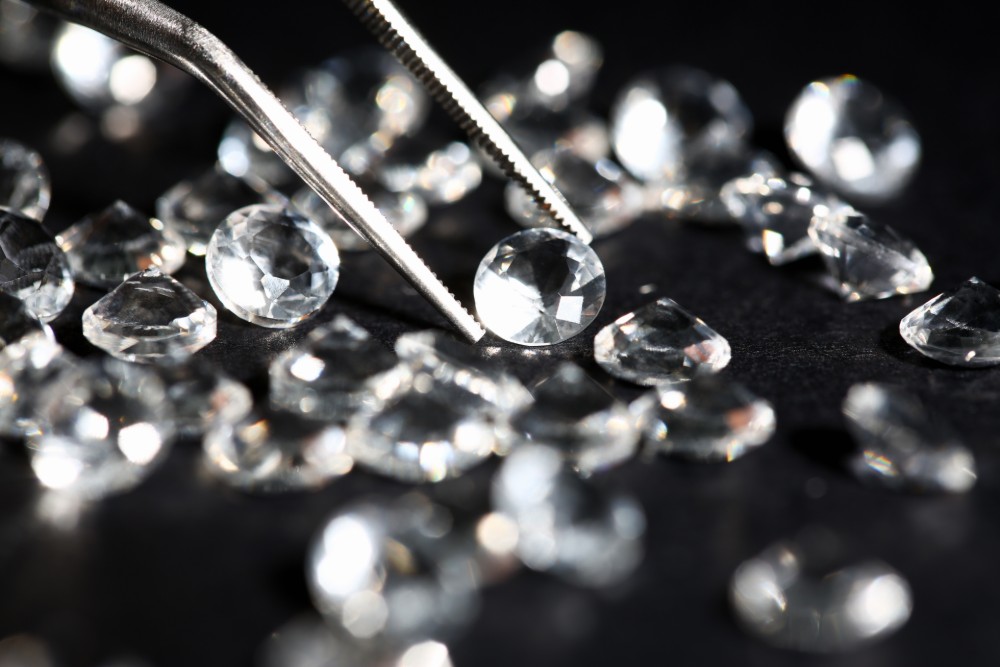The Parts of a Diamond: 4 Things to Know Before Visiting a Jeweler
October 15th, 2019

When you’re searching for a diamond, it’s important to do your research before you pick one. After all, every diamond is different—and beyond that, even diamonds that are the same shape and carat weight can be cut differently. What’s the anatomy of a diamond? And what is it that makes a diamond beautiful?
Here at Rogers Jewelry Co., diamonds are our favorite gemstone, and they’ve been a cornerstone of our business for over 82 years. Our experience with diamonds has given us a unique insight into the inner workings of this gemstone, and we’re always ready to assist our customers when they want to learn about diamonds!
The Facets
The most important element of a beautiful diamond is the facet. This workhorse of design brings out the unique beauty of a diamond in a way that no other detail of design can hope to match. In ancient times, before specialized tools and sciences were discovered, proto-diamantaires had to settle on simply cleaning rough octahedral diamonds. But by simply creating a table, the diamond-cutters were fascinated to discover the superlative fire and scintillation that make diamonds beloved today.
From the table, cutters worked outward, learning that different flat surfaces cut into the stones were able to disperse light in a more reflective way, ultimately leading to the 58 facets in modern round-cut diamonds, the treasure that decorates most engagement rings.
The Table
We mentioned the table, but among facets, it’s the most important. The table is the flat surface of the diamond. When you look at a diamond engagement ring, it’s the first thing you notice. That’s because the table is the primary location for the ingress of light rays and the egress of fire, sparkle, and glow.
Many diamond shapes feature extremely long tables, including emerald-, marquise-, and oval-cut diamonds, but the most brilliant cuts usually feature circular or square tables, since this allows light to disperse equally through the diamond. In shapes with longer tables, the imbalance leads to what’s known as the “bow tie effect,” which is a dark area at the center of the stone caused by light leakage.

The Girdle
The band where the down-sloping crown (upper part) of the diamond meets the upsloping pavilion (lower part) of the stone is referred to as the girdle. This girdle can range from extremely thin to extremely thick, and the scalloping of the girdle also affects its quality. If a girdle is too thin, it becomes extremely fragile and subject to chipping, if not total breakage. If the girdle is too thick, it becomes a visible and unsightly element of the diamond and causes a greyish hue under the table.
Top diamantaires, like Fire & Ice, go out of their way to create in-house proportions that mathematically work with the dimensions of a given diamond to maximize durability and inner reflectivity.
The Culet
A rather subtle touch in diamond anatomy is the culet. On the underside of the diamond pavilion, all of the facets come to a point. This point can, depending on the setting, be vulnerable to chipping or breakage. To protect the integrity of the diamond, the culet was devised. By sawing off the very tip of the stone (properly, of course!), very little light is lost.
However, with modern settings, top diamantaires like Hearts on Fire often choose to forego the addition of a culet. It’s up to you to determine how safe you believe your diamond will be in your chosen setting, and by association, how valuable the culet is to you!
Learn More about Diamonds at Rogers Jewelry Co.
If you’d like to learn more about the diamonds and diamond jewelry we offer at Rogers Jewelry Co., send us an email at contact@thinkrogers.com, or visit us at any of our eight locations: Modesto, San Luis Obispo, Bakersfield, Folsom, Fresno, Elk Grove, and Visalia, California; or Reno, Nevada!